- This pedestal ewer whose semi-ovoid body is surmounted by a high and narrow neck, is supported by a high circular foot. Curves and counter-curves combine with an aesthetic laden with motifs inspired by the plant world, centered in particular on the vine. Its decoration, finely sculpted in relief, uses a vocabulary of naturalistic forms which offers us a real ode to Nature. The sculptor has succeeded in breathing living forms into a material that is nevertheless mineral and inert. This delicate work then gives way to an illusionist dialogue between the container and the content.
- The foot is decorated at the base with a torus of leaves, grooves and a ring surmounted by a wreath of leaves at the node. The body is divided into two superimposed registers. In the lower part, gadroons stretch to accompany the plump body while lanceolate leaves curve outwards marking a demarcation with the upper register. This area is surrounded by a second torus of leaves. The latter is distanced by a terrace of vine branches from which emerge clusters of grapes, sculpted in high relief, which come to mark the shoulder of the ewer. These vine branches continue their ascent on the pass. The beak is wide open with an offset lip with an undulating line. The volute handle (double winding), which an acanthus leaf comes to marry, rests on the shoulder of the ewer to be attached to the lip at the back of the spout.
- On the technical level, the sculpture is tripartite. The three elements that make up the ewer fit together (1: from the foot to the body, 2: the lower part of the body, 3: any upper part). The elements have been carved in very fine-grained limestone, the surface is smooth.
- Some lacks on parts sculpted in high relief are to be noted, especially at the level of the grapes and the lanceolate leaves (see photos).
- Height: 25cm


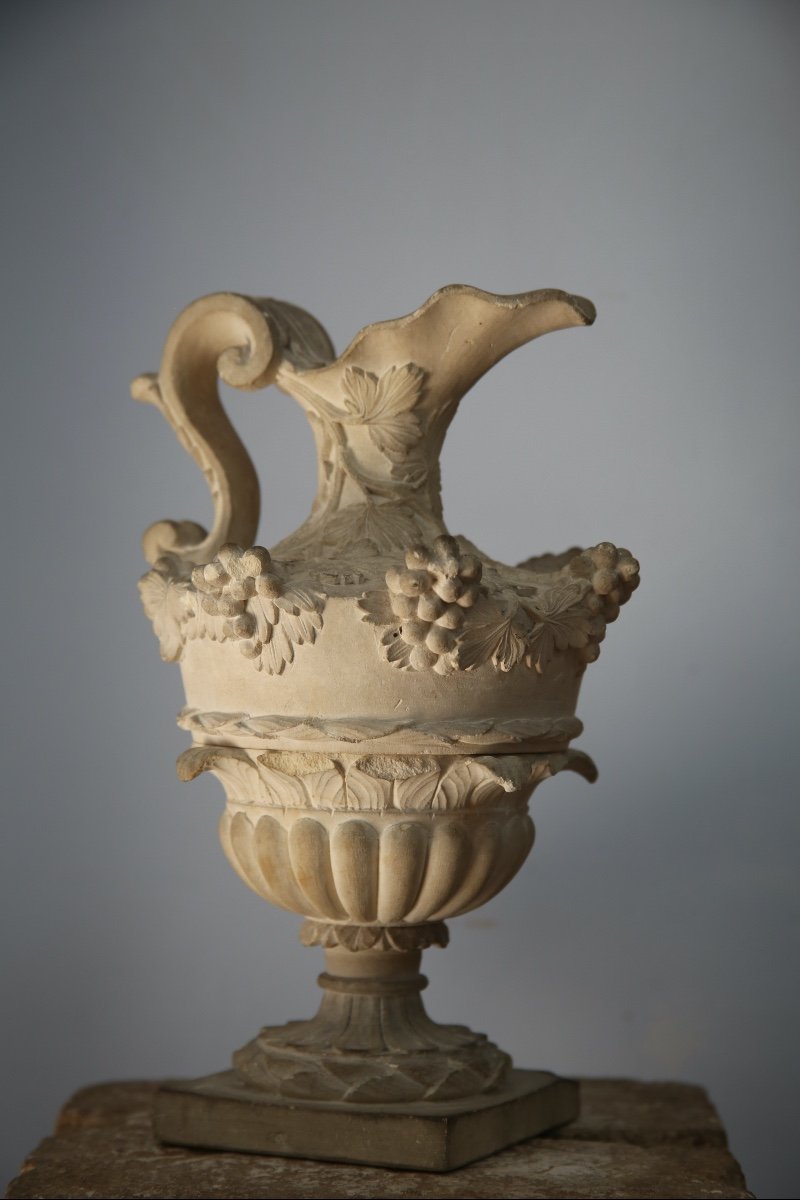
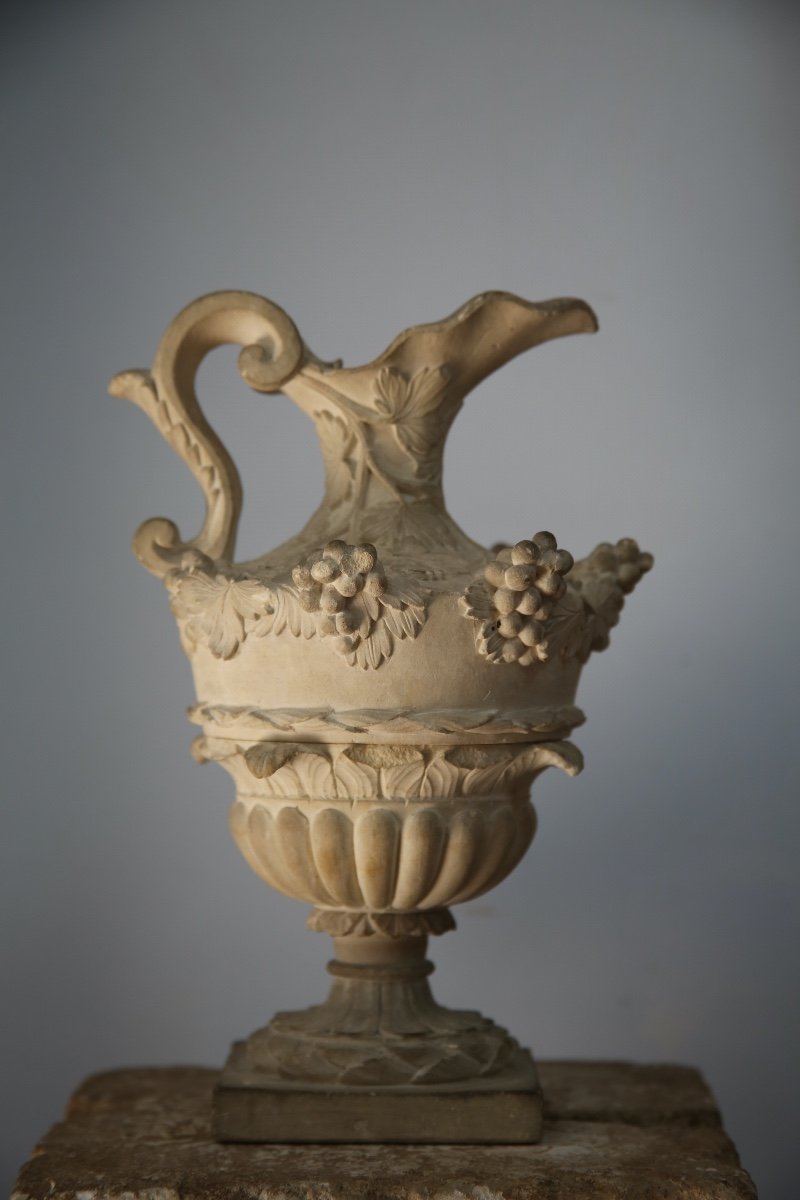
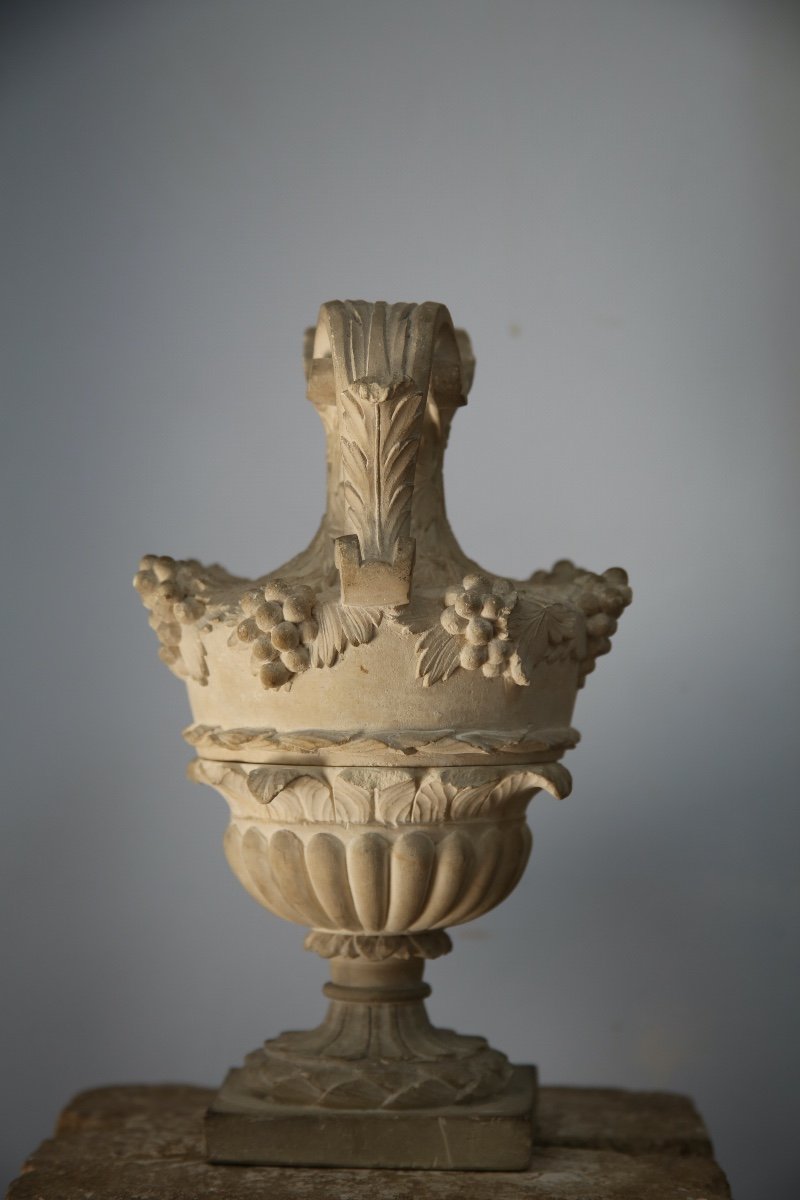
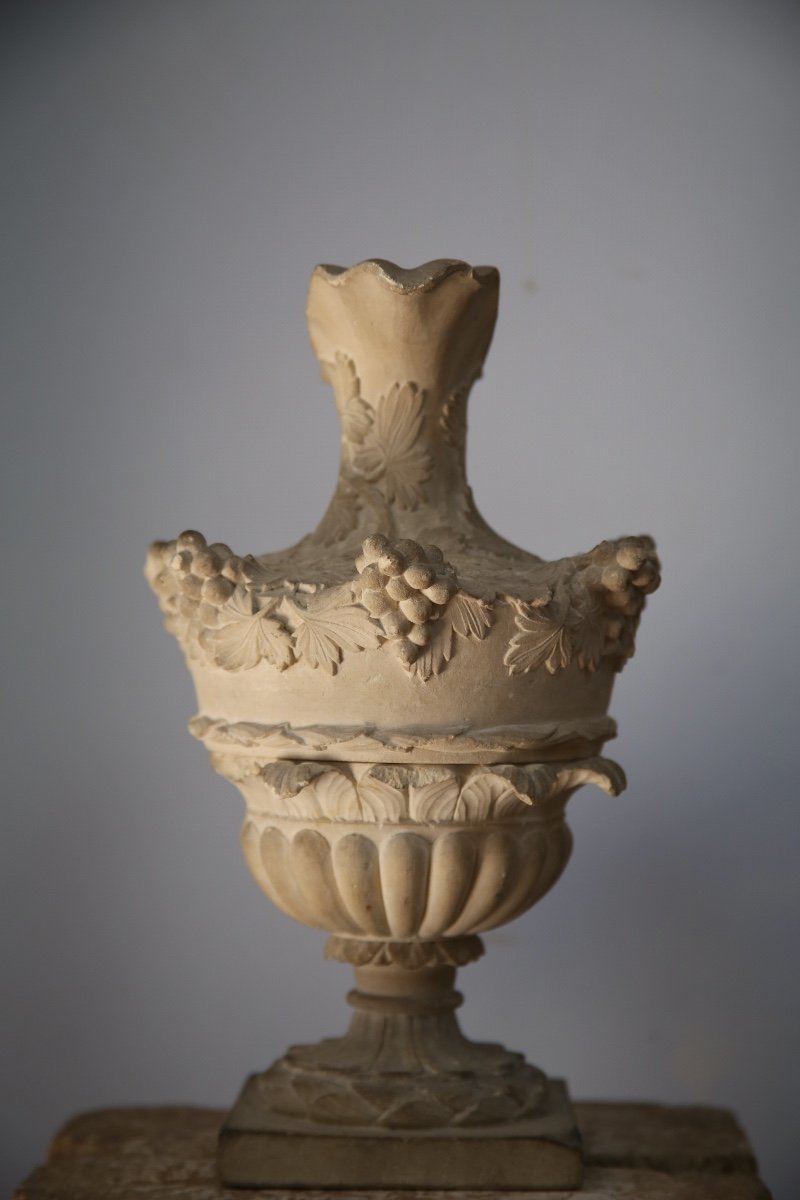

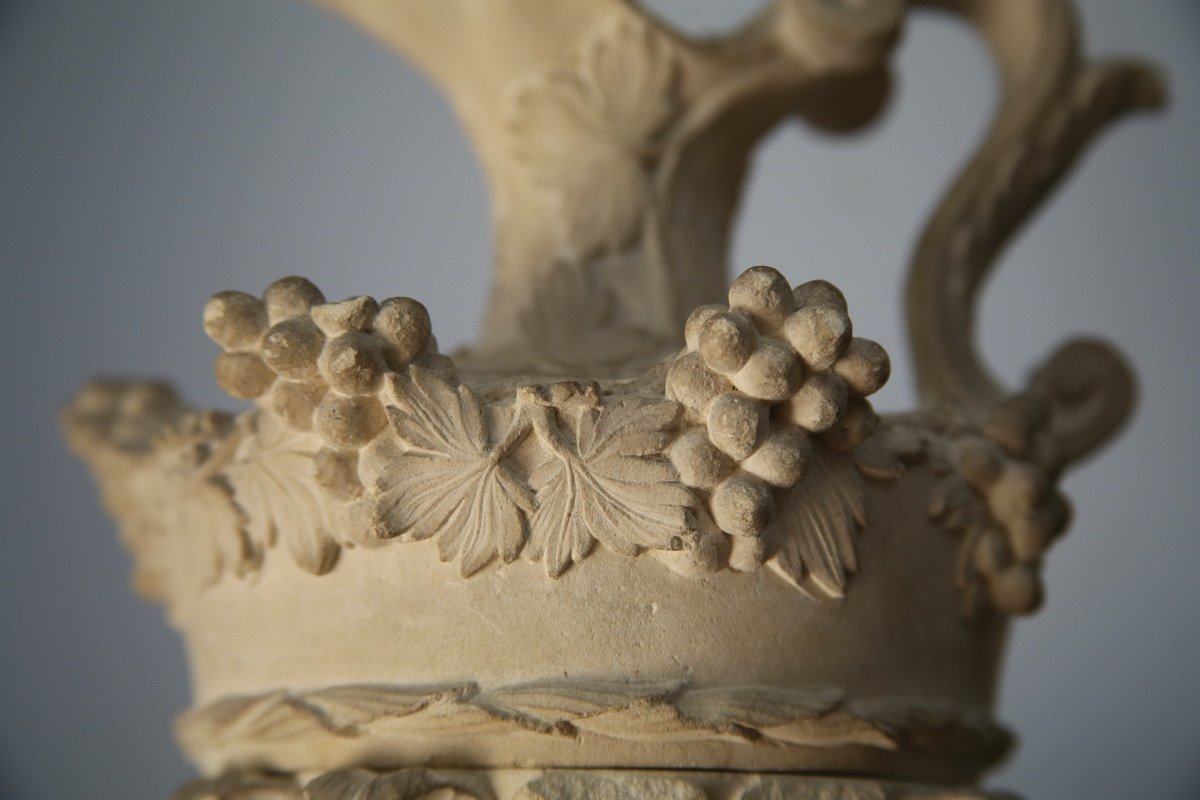
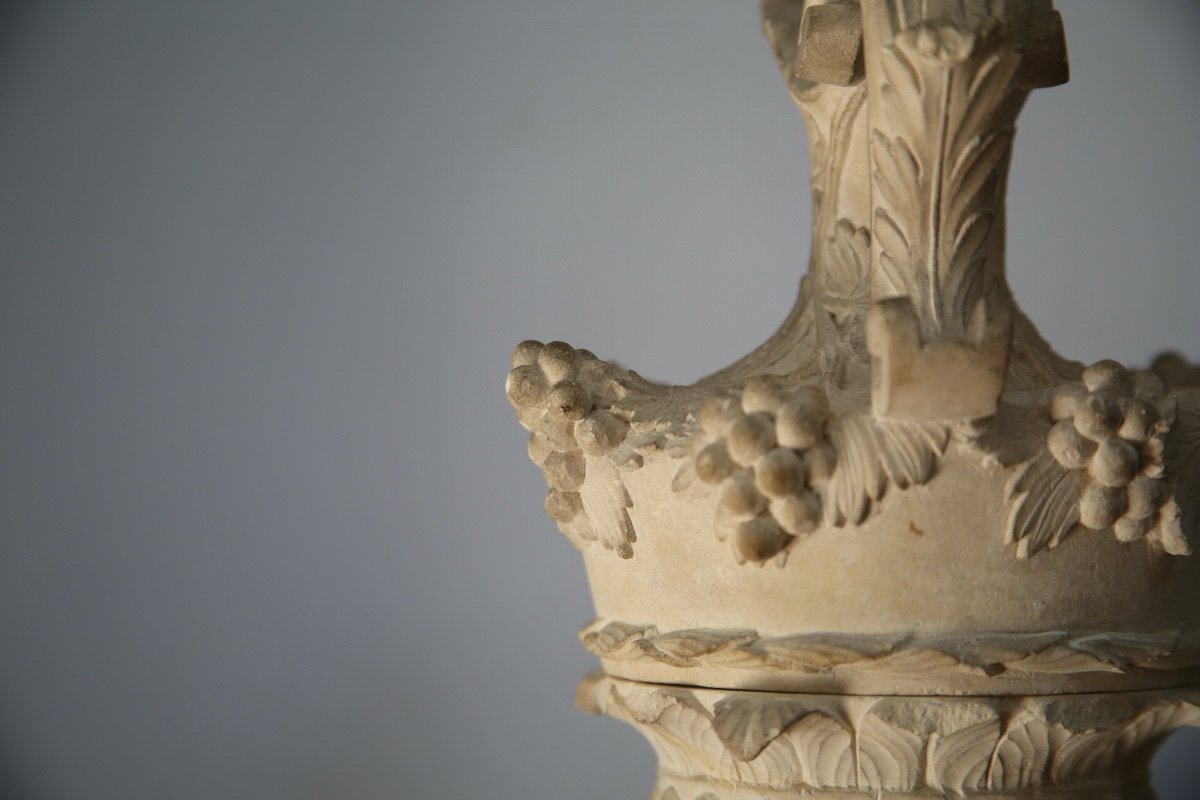
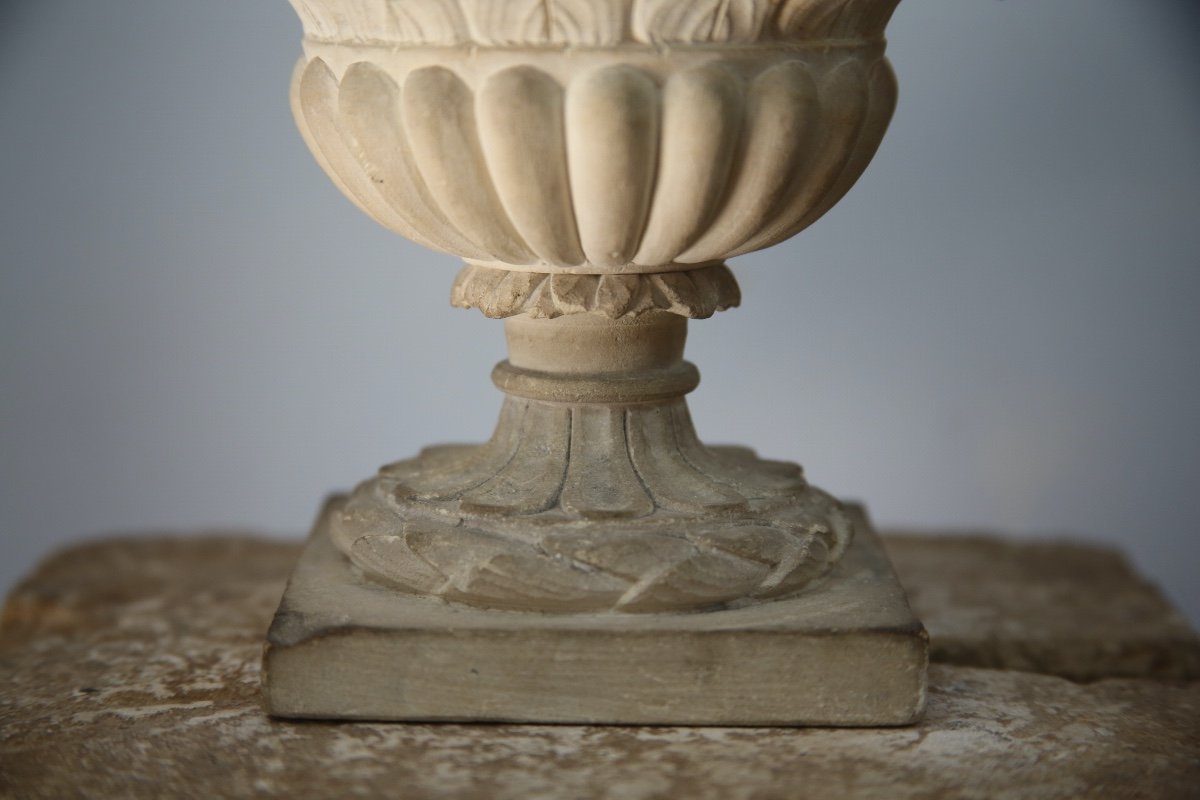
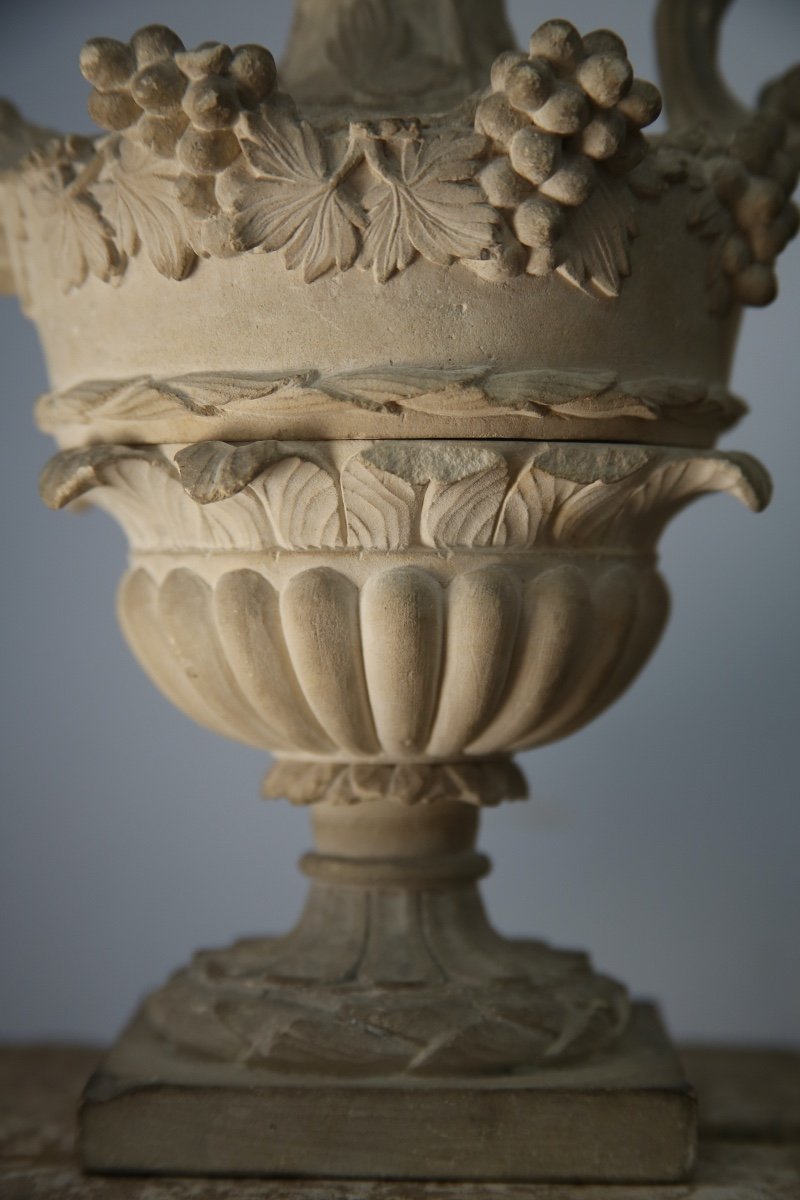










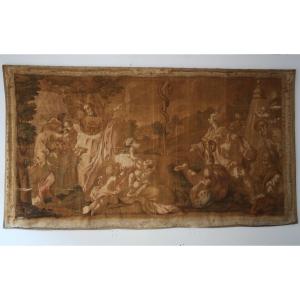
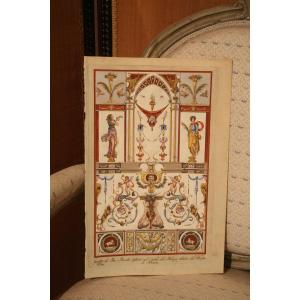



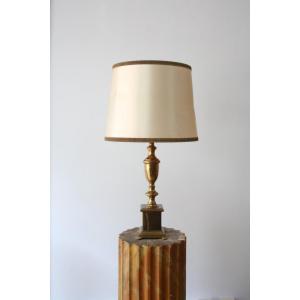

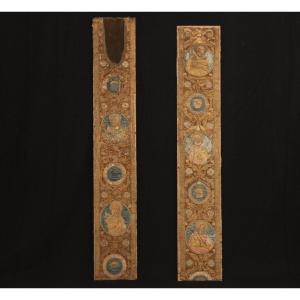



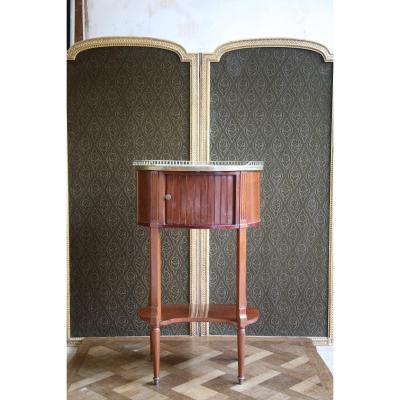
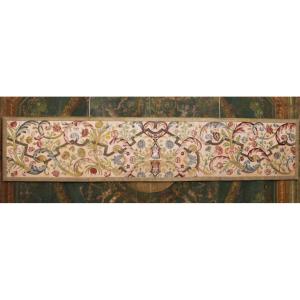

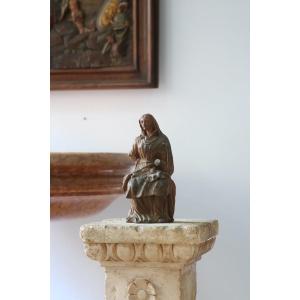
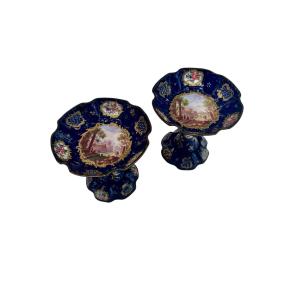
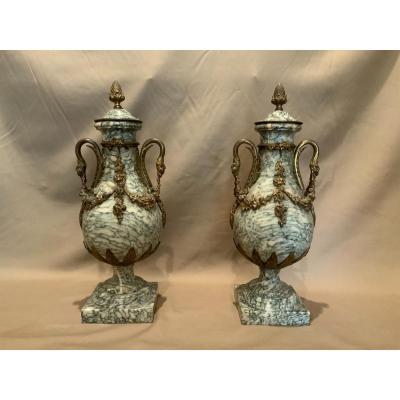

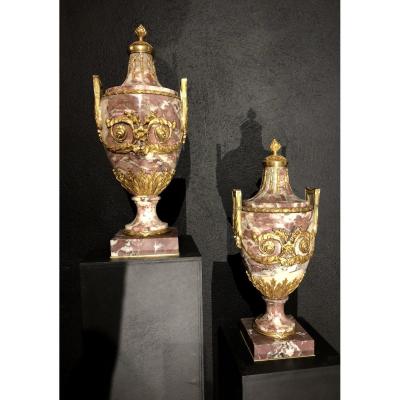
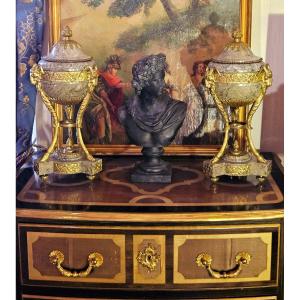



 Le Magazine de PROANTIC
Le Magazine de PROANTIC TRÉSORS Magazine
TRÉSORS Magazine Rivista Artiquariato
Rivista Artiquariato